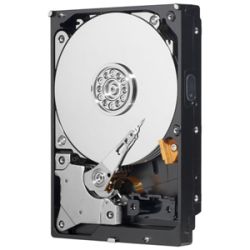Seagate Squeezes 1TB Into A Square Inch

Seagate says it’ll make 6TB 3.5-inch drives in the near future after making a major breakthrough
Seagate has claimed a major milestone in the storage industry after it said it was able to pack one terabit, otherwise known as a trillion bits of data, into a square inch.
This should pave the way to hard drives with double the capacity of today’s models, although users may be left waiting until the end of the decade for such technologies to appear, Seagate said.
Super HDDs

Seagate used the heat-assisted magnetic recording (HAMR) technique to tighten the concentric circles on the disk’s surface where the bits are packed in. HAMR uses a laser to help heat specially-chosen material on which the bits are stored, whilst enjoying the high magnetic stability of those materials.
The storage company achieved a linear bit density of around two million bits per inch, producing a data density of just over one trillion bits.
“The growth of social media, search engines, cloud computing, rich media and other data-hungry applications continues to stoke demand for ever greater storage capacity,” said Mark Re, senior vice president of heads and media research and development at Seagate.
“Hard disk drive innovations like HAMR will be a key enabler of the development of even more data-intense applications in the future, extending the ways businesses and consumers worldwide use, manage and store digital content.”
HAMR was actually developed by Fujitsu in 2006 as it sought to reach the milestone achieved by Seagate.
The latter now expects 6TB to soon be packed into 3.5-inch drives and 2TB into 2.5-inch models. Seagate believes 5 to 10TB per square inch will be possible soon, opening the way for 30TB to 60TB 3.5-inch drives.
HAMR has been touted as the successor to perpendicular recording, which has an estimated limit of close to 1TB per square inch, due to “superparamagnetism”. This is when extremely small particles can be magnetised by an external magnetic field, therefore mangling the data on hard drives.
Hard drive manufacturers are still battling their way back from the Thai floods of last year, which severely disrupted manufacturing processes. In December, Intel was forced into lowering its revenue forecast as a result of the damage. Thailand is responsible for producing around 70 percent of the world’s hard drives.
Seagate has still managed to invest in the business, however, following last year’s acquisition of Samsung’s hard drive unit in a $1.375 billion (£0.84bn) deal.
How hardcore are you on your hardware? Test out your knowledge with our microprocessor quiz.